Liposuction in Hua Hin
Search and Compare the Best Clinics and Doctors at the Lowest Prices for Liposuction in Hua Hin

Find the best clinics for Liposuction in Hua Hin
With Medijump you can browse 1 facilities offering Liposuction procedures in Hua Hin. The cheapest price available is $358 in Khon Kaen
Liposuction in Thailand
Price: $ 358
Liposuction in Khon Kaen
Price: $ 358
Liposuction in Nonthaburi
Price: $ 528
Ukraine offers the best prices Worldwide
Price: $ 120
Sanpaulo Hospital, located in Bor Fai, Hua Hin, Thailand offers patients Liposuction procedures among its total of 27 available procedures, across 5 different specialties. The cost of a Liposuction procedure starts from $2,501, whilst the national average price is approximately $1,676. There is currently a lack of information available on the specialists practicing at the Hospital, and they are not accredited by any recognized accreditations institutes
Compare Before & After Photos of _procedure_photos.phpLiposuction
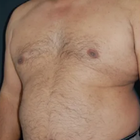
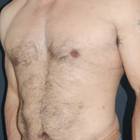
Front view

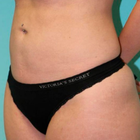
Half-side view
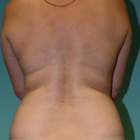
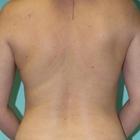
Full-side view
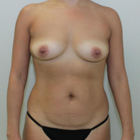

Front view
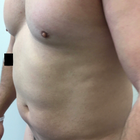

Half-side view
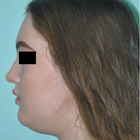
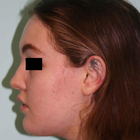
Full-side view
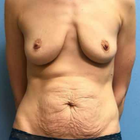

Front view
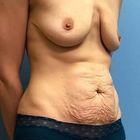

Half-side view
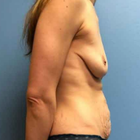

Full-side view
WHY US?
At Medijump, we're making medical easy. You can search, compare, discuss, and book your medical all in one place. We open the door to the best medical providers worldwide, saving you time and energy along the way, and it's all for FREE, no hidden fees, and no price markups guaranteed. So what are you waiting for?

Free

Best Price

Widest Selection

Risk-Free
What you need to know about Liposuction in Hua Hin?

Liposuction is a cosmetic surgery that “sucks” out fat from areas that are hard to lose through a healthy diet and exercise, while liposculpture is the shaping of the skin back to its desired shape. Both are done in conjunction with one another at the same time. Most areas can be treated. Traditionally the most popular areas to treat are the stomach/abdomen, chin and neck, love handles, arms, and inner and outer thighs. Becoming more popular are the knees, calves and ankles, all with very successful results.
While liposuction can permanently remove fat cells and alter your body shape, it should not be viewed as a quick fix for individuals who are significantly overweight. The procedure works best for those who have already lost some weight themselves and are close to their ideal weight but need help tackling stubborn areas of fat in problem areas.
What is the cost of Liposuction in Hua Hin?
When you're thinking about liposuction in Hua Hin, one of the first things you probably wonder about is the cost. Here's the thing: the price isn't the same for everyone. It hinges on a few details like how many parts of your body you’re getting treated, how complex the treatment is, and the professional fee of your doctor. Costs for anaesthesia and the use of the surgical facility are also added to the bill. It's vital to remember, too, that because liposuction is often carried out for aesthetic reasons, normal health insurance might not cover it.
Can Liposuction be used as a weight-loss method?
Unwanted fats are very hard to get rid of especially if you are not a fan of exercise or diet. Liposuction, also known as Lipoplasty, liposculpture suction, lipectomy or simply lipo, basically eliminates unwanted fats by suctioning it away. Despite the growing trend of non-invasive fat reduction treatments, liposuction is still the leading procedure to remove stubborn fat cells.
Liposuction permanently removes fat cells and enhances the shape of your body. A plastic or dermatologic surgeon usually performs this type of procedure on the patient’s belly, hips, thighs, buttocks, arms, back or face to improve their shape. Furthermore, liposuction can be done together with other plastic surgeries such as facelifts, breast reductions, and tummy tucks.
This treatment procedure is particularly used for aesthetics, mainly to improve a person’s appearance. In most cases, maintaining and achieving such positive results will depend on your lifestyle.
What does a Liposuction Procedure Involve?
Before you have the treatment, a series of tests are required to ensure if you are fit for the surgery. You will also need to sign a consent form to confirm that you are fully aware of the risks, benefits and possible alternatives to the procedure.
You will likely be put under using general anesthesia, which can last for 1 to 4 hours. An epidural can also be used for procedures on the lower part of the body, although this is becoming increasingly unpopular now. Alternatively, you may be given local anesthesia if the procedure will be on small areas of your body. You may be asked to stand up during the procedure to ensure proper fat removal, but you will not feel any pain.
Tiny incisions will be made in the areas of interest through which a cannula can fit. This thin tube-like device is connected to a vacuum, capable of suctioning the fat from within your body. There are a few common techniques used, including Laser-Assisted or SmartLipo, UAL (Ultrasound-Assisted Lipo) or the most popular technique, Tumescent Lipo - this involves the pre-injection of a saline solution to help separate the fat from the blood, so less blood is removed. You'll discuss the best option with your surgeon before confirming what type of Liposuction is best for you.
How Long Should I Stay in Hua Hin for a Liposuction Procedure?
Generally, patients who have received general anesthesia will be required to spend the night in the hospital (in-patient). Patients, who have had local anesthesia, may be able to leave the hospital on the same day.
After the operation, you will have to wear support bandages (support corset, bandages or elasticated support) whilst healing. Expect some pain, swelling and bruising during the following days and weeks. Your surgeon will prescribe medication to help control your pain and antibiotics to reduce the risk of infection. Furthermore, your stitches may be removed during your follow-up appointment with your surgeon. You should expect to stay in Hua Hin for about a week post-op to allow for the initial recovery and check-up appointments, which will include the removal of stitches.
What's the Recovery Time for Liposuction Procedures?
Numbness in the specific area of your body where the fat was removed is to be expected for the first couple of weeks, usually, this will improve after 6 to 8 weeks. You may also need to wait a few days before going back to work. As for your normal activities, especially exercise, you may have to wait a few weeks before resuming.
Overall, the recovery time may vary from patient to patient. In most cases, patients can return to light activities within 2 to 3 days and are also able to go back to work after two weeks. As for the results, you may see visible results after 3 to 4 weeks, however, it can take several months before you see the final outcome.
What sort of Aftercare is Required for Liposuction Procedures in Hua Hin?
Just like any other cosmetic surgery, following your surgeon’s aftercare instructions is vital in achieving and maintaining the best results. If the procedure was done above your waistline, you may be advised to sleep propped on pillows to have elevation on the specific area. This helps drain the fluids and prevent them from pooling. Furthermore, applying cold compress on a certain area where the procedure was performed is highly recommended, this will reduce inflammation and bruising especially during the first few days.
What's the Success Rate of Liposuction Procedures in Hua Hin?
Liposuction remains one of the most popular cosmetic surgeries with a success rate of 85%, offering patients the enhanced body shape they've been craving. However, just like any other surgeries, it also comes with possible risks. Complications vary and are dependent on the procedure is as well as your surgeon’s skills. Possible risks and complications include:
- Severe bruising
- Inflammation
- Blood clot forms in veins, causing inflammation and complications (Thrombophlebitis)
- Kidney or Heart problems - changes in the body's fluid levels during the procedure may cause kidney or heart problems.
- Pulmonary embolism - when fat gets into your blood vessels and travels to your lungs, eventually, blocking your lungs.
Are there Alternatives to Liposuction Procedures in Hua Hin?
CoolSculpting – is a fat freezing liposuction alternative. This is more suited to people who are close to their target weight but still have unwanted pockets of fat. Coolsculpting is a fat-freezing procedure that crystalizes your fat cells until they break apart painlessly.
Ultrashape - a non-invasive procedure that doesn’t require the need for anesthesia. This treatment procedure will make use of a body sculpting device that vaporizes fat cells within the targeted area with waves of ultrasound energy. Fat cells are permanently flushed out of your body, giving you a more natural-looking fat loss.
How does Liposuction differ from CoolSculpting and Vaser liposuction in terms of technique?
Liposuction vs Vaser Liposuction
Like traditional liposuction, the purpose of Vaser liposuction is to change the contours and shape of the body by removing persistent fat deposits. The word Vaser is actually an acronym for Vibration Amplification of Sound Energy at Resonance. This specialized ultrasound technology breaks down the fatty tissues using ultrasonic frequency waves, which is why it's often referred to as Ultrasonic Liposuction or Ultrasound Liposuction.
Liposuction vs CoolSculpting
CoolSculpting is the new non-invasive, freezing method used to also change the body contours and shape, however, this method does not require the use of a cannula so there is no damage to the overlying skin. Instead, it involves the controlled application of cooling localized fat deposits, which are then expelled from the body through the kidneys.
How safe is Liposuction in Hua Hin?
Liposuction, when performed in Hua Hin by a qualified and experienced plastic surgeon, is generally considered safe. The procedure has evolved significantly since its introduction, with advancements in technology and techniques contributing to its safety profile. Most liposuction procedures are performed without major complications, and patient satisfaction rates are high. However, as with any surgery, there is always an inherent risk.
It's crucial to have a detailed discussion with your surgeon regarding the safety of the procedure. The surgeon should be open about potential risks and complications, and explain how they would handle them should they arise. Factors such as your overall health, medical history and the area or the amount of fat being removed can influence the risks associated with liposuction.
What Should You Expect Before and After a Liposuction?
After your surgery, expect some swelling and discolouration in the areas where the fat was removed. To assist in healing and lessen swelling, you'll be given a snug garment to don. It is advisable to arrange for someone to take you home after the surgery and be with you for the initial day after the procedure. Though some changes will be noticeable soon after the surgery, the best results will take shape once the swelling has fully dissipated, which usually takes around 3-6 months. Regular check-ins with your surgeon are vital to ensure your recovery is progressing as expected.
As the wise saying goes, "Your waistline is your lifeline." Liposuction does remove fat cells for good, but weight gain post-procedure can cause the leftover fat cells to grow, potentially in different areas of your body. Therefore, a balanced diet and regular exercise are crucial for maintaining your new silhouette.
How Can I Prepare for Liposuction in Hua Hin?
Prepping for a liposuction surgery in Hua Hin? You've got this! Here are some absolutely essential steps you should follow for a smooth and successful procedure:
- Consultation: First things first. Have an in-depth consultation with your plastic surgeon. They'll assess your health status and discuss your goals. Taking this information into account, they'll provide some key instructions for you leading up to the surgery day.
- Healthy Lifestyle: In preparation for the procedure, it's of utmost importance to maintain a healthy lifestyle. Get in regular exercise. Eat balanced meals. Hydrate frequently. If you smoke, now is the time to quit. And hold off on alcohol. Your body will be on the fast track to healing, thanks to these healthy habits.
- Follow Instructions: Your surgeon will give you a set of preoperative instructions. Avoiding certain medications or supplements might be on the list. Stick to these guidelines religiously.
- Support Person: And lastly, on surgery day, make sure to have a trusted friend or relative by your side. Once the procedure is completed, you'll need a safe ride back home.
Whilst the information presented here has been accurately sourced and verified by a medical professional for its accuracy, it is still advised to consult with your doctor before pursuing a medical treatment at one of the listed medical providers
No Time?
Tell us what you're looking for and we'll reachout to the top clinics all at once
Enquire Now

Similar Procedures in Hua Hin
Prices Start From $31

Prices Start From $120

Prices Start From $120

Prices Start From $120

Prices Start From $120

Prices Start From $31

Prices Start From $120

Popular Procedures in Hua Hin
Prices Start From $111

Prices Start From $931

Prices Start From $76

Prices Start From $236

Recommended Medical Centers in Hua Hin for Liposuction

- Interpreter services
- Translation service
- Religious facilities
- Medical records transfer
- Medical travel insurance
- Health insurance coordination
- TV in the room
- Safe in the room
- Phone in the room
- Private rooms for patients available

- Interpreter services
- Translation service
- Religious facilities
- Medical records transfer
- Medical travel insurance
- Health insurance coordination
- TV in the room
- Safe in the room
- Phone in the room
- Private rooms for patients available

- Interpreter services
- Translation service
- Religious facilities
- Medical records transfer
- Medical travel insurance
- Health insurance coordination
- TV in the room
- Safe in the room
- Phone in the room
- Private rooms for patients available
Liposuction in and around Hua Hin
About Hua Hin
Perched on the seaside and a mere 195 km from Bangkok, sits the resort town of Hua Hin. Once a modest and peaceful island, it has since transformed into a prominent tourist destination within Thailand, boasting superb infrastructure and a diverse range of accommodation options. These cater to the growing ex-pat community and the influx of tourists who make their way to this picturesque town each year.
Hua Hin is synonymous with exceptional healthcare services that draw in medical tourists from all over the globe. This influx can be attributed to the town's provision of top-tier medical treatments that uphold high international standards. But it is not only the medical offerings that attract these visitors, they also revel in the unique sights, shopping experiences, and the unmatched Thai hospitality available in Hua Hin. Consequently, this charming seaside town has secured its place as one of the most sought-after wellness destinations on a global scale.
The benefits of traveling to Hua Hin as a medical tourist are as follows.
- Affordability: The treatments and medical procedures performed here cost only a fraction of the price you would expect to pay in your home country.
- Highly reputed professionals: Well-trained Doctors, who have a good understanding of the English language, are ready to serve you.
- Latest technology: You will find the hospitals equipped with modern and up-to-date medical equipment & technology.
- Wide range of Procedures: Cosmetic surgery, anti-aging treatments, cardiac surgery, premium-health check-ups are some of the more popular treatments amongst the medical tourists visiting Hua Hin.
Bangkok Hospital Hua Hin, San Paulo Hospital, and Hua Hin Hospital are some of the well- known healthcare centers of this Beach resort town.
Popular areas in Hua Hin
- Khao Takiab: The vibrant suburb lies 7 km away from the town and the main attractions include Khao Mountains, the 20 m tall Buddhist Statue, and the beach. You can enjoy the variety and taste of the delicious seafood. Tourists can also indulge in a variety of activities such as kayaking, swimming, jet-skiing, banana boat ride, and parasailing. Several budget hotels and luxurious resorts are available in the neighborhood to accommodate visitors.
- Cha-Am Beach: The beach is stunning yet quiet. You can relax while reading a novel or under a parasol for a traditional Thai massage. You will find stretches of local food shops, budget hotels, and guesthouses and the replica of the famous Greek island, Santorini is the highlight of this region.
- Cicada Market: The famous Cicada Market houses an impressive array of shops that sell handicrafts, paintings, glass-blown figurines of animals, T-shirts with graphic designs, and more. You can even get your own caricature painted for 300 THB.
Ensure to include the Maruekhathaiyawan Palace, Black Mountain Water Park, Hua Hin Hills Vineyard, Plearn Wan Shopping Village, Hutsadin Elephant Foundation, Wat Bor Fai, and Ratchapak Park in your itinerary. These attractions will only help to make your trip more memorable and fun-filled.
Weather and Climate in Hua Hin
Hua Hin has a tropical climate and experiences three distinct seasons: Wet, Dry, and Hot.
- Dry season: November to February. The average temperature is around 26°C during the dry season. The nights get cooler and sunshine is in abundance during the day. Afternoons are quite windy with high tides. It seldom rains during this season.
- Hot season: March to June. The average temperature can rise to 29°C. Some days can be very hot with temperatures as high as 35°C or more. Even during the night, the weather is dry and hot. However, towards the end of the season, you can expect moderate rains.
- Wet season: July to October. The average temperature remains around 28°C. Evenings are generally cool and pleasant. The afternoons receive moderate to heavy downpours. October is the wettest month at Hua Hin. There were incidences of flooding in downtown a few years back. Thankfully, the runoff is too quick to cause any potential damage.
November to March is the best time to visit Hua Hin.
Getting around in Hua Hin
Hua Hin International Airport is 15 minutes away from Hua Hin city center. Recently, the Thai Government proposed plans costing 3.5 billion Baht to reform and upgrade the airport to handle more passengers. Right now, the airport handles charted flights, besides Air Asia's Hua Hin-Kuala Lumpur domestic flights.
Within the City, you can use the daily ferry service to commute to cities like Pattaya, Ko Samui, and Ko Tao. As Bangkok lies close to Hua Hin, you can drive or take the train to the capital city. Hua Hin Railway station operates several ordinary, express, and special express trains to its neighboring towns and cities.
Moving around the compact town of Hua Hin is an easy task. The Songtaew generally serves as the preferred and most economical mode of transport, setting you back just 10 Baht for a distance of 1-3 km. Tuk-tuks, while more expensive, come into play for closer distances, exacting a minimum fare of 150 Baht for a distance within a kilometer. For those seeking a middle-ground price point, motorbike taxis offer a feasible solution, charging around 60 Baht for a distance spanning 1-3 km. Additionally, conventional taxis and rickshaws remain readily available, bringing further convenience to commuting within Hua Hin.
Beyond these options, the town also caters to those who prefer to employ self-navigated modes of transport. Car and bike rental services are plentiful in Hua Hin, providing visitors the freedom to roam around the city at their own pace. Whether you're driving down the scenic coastal route or cycling through the charming city streets, these personalized transport services add a layer of adventure and exploration to your Hua Hin travel experience.
Tourist visas in Hua Hin
Thailand has a relatively flexible visa policy, which makes it a popular tourist destination for people from all over the world. Citizens of many countries, including the G7 countries, can enter Thailand without a visa and stay for up to 30 days. Citizens of some other countries, such as India, China, Russia, Bulgaria, and Saudi Arabia, can obtain a visa on arrival, which allows them to stay for up to 15 days.
If you are planning to stay in Thailand for longer than 15 days, or if you are traveling to Thailand for a specific purpose, such as work or study, you may need to apply for a non-immigrant visa. There are different types of non-immigrant visas available, depending on your purpose of travel.
You can apply for a non-immigrant visa at a Thai embassy or consulate in your home country. You will need to provide a valid passport, a visa application form, and other supporting documents, such as a letter of invitation from a Thai company or university.
The processing time for non-immigrant visas can vary, so it is important to apply well in advance of your travel date.
Here are some additional tips for applying for a Thailand visa:
- Make sure that you have all of the required documents.
- Be prepared to answer questions about your trip and your purpose for visiting Thailand.
- Be aware that the visa requirements for Thailand can change at any time, so it is always best to check with the Thai embassy or consulate in your home country before you travel.
Additional Information
- Thai is the official language largely spoken throughout the country. The locals in Hua Hin speak good English. Yet, it is indispensable to learn a few common Thai words and phrases.
- Hua Hin’s currency is the Thai Baht (TBH). 1 US dollar is approximately around 34.5559 THB as of 2023.
- All of the big resorts and restaurants accept credit card payments. You can also find many ATM machines and money exchange booths across the city.
- Most of the population in Hua Hin practices Buddhism, followed by Islam and Christianity. When talking about members of Thailand's Royal Family you must be respectful as it is of the highest priority.
- The people of Hua Hin celebrate many festivals. New Year's Eve, Chinese New Year, Makha Bucha, Chakri Day, Songkran, Coronation Day are a few of them. The exact festival date varies every year on a Western Calendar.
Popular Searches
- Plastic Surgery in Thailand
- Dental Implants in Thailand
- Hair Transplant in Thailand
- Breast Augmentation Thailand
- Gastric Sleeve in Thailand
- Gender Reassignment Surgery in Thailand
- Laser Hair Removal in Bangkok
- Botox in Bangkok
- Dermatology in Bangkok
- Breast Augmentation in Bangkok
- Coolsculpting in Bangkok
- Veneers in Turkey
- Hair Transplant in Turkey
- Rhinoplasty in Turkey
- Stem Cell Therapy in Mexico
- Rhinoplasty in Mexico
- Liposuction in Mexico
- Coolsculpting in Tijuana
- Rhinoplasty in Korea
- Scar Removal in Korea
- Gastric Sleeve in Turkey
- Bone Marrow Transplant in India
- Invisalign in Malaysia
- Plastic Surgery in the Dominican Republic
- Tummy Tuck in the Dominican Republic
- Plastic and Cosmetic Surgery in Poland
- Rhinoplasty in Poland
- Hair Implant in Poland
- Dental Implants in Poland
- IVF in Turkey
